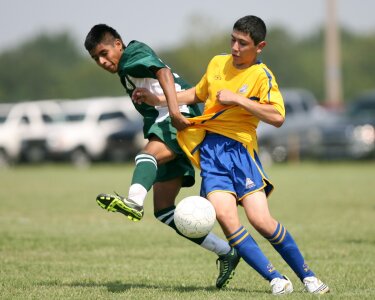
Sport Psychology in Action: 4-Part Article Series Connecting Research to Practice
In high school, many athletes have the mindset that winning is the only thing that matters. This mindset can be detrimental to their motivation, especially when they face challenges like not starting as a senior or losing a game even when they played their best. As a coach, you have the ability to change this mindset by creating a positive environment focused on mastery of skills that prioritizes athlete self-improvement instead of peer comparison. Research has shown that the environment, or sport climate, influences an athlete’s motivation and can be directly influenced by you (Horn, 2008).
It is important that you create a climate for your team to improve motivation, and ultimately, individual and team performance. A mastery climate evaluates athletes based on their own improvements and progress, whereas a performance climate evaluates athletes on how they compare to others (Horn, 2008). For example, if a coach evaluates players based on how many shots on goal they have each game compared to their teammates, they would be creating a performance climate. However, this evaluation may neglect that even though an athlete did not have the most goal-scoring opportunities on their team, they increased their shots on goal from the previous game and played well.
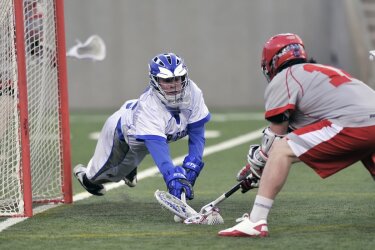
In a performance context, the top player gets benefits and others do not, while in a mastery context everyone is motivated because they are evaluated on their own improvements. Mastery climates produce desirable consequences for development and participation in athletes, positive characteristics less frequently seen in performance climates. Focusing on creating a mastery climate can improve your athlete’s motivation while also helping them develop positive traits they can use long after their involvement in sport.

Practitioners have developed a framework to evaluate coaching practices to assess if they are mastery or performance-focused on six structures: task, authority, recognition, grouping, evaluation and time (TARGET)(Horn, 2008). This framework can be used to create a mastery climate, and each piece of the framework will be explained briefly before providing an example of how you can incorporate these aspects into your own work.
TARGET
- Task: The type of tasks given to athletes.
- Practice Tip: Tasks should be challenging and diverse so all athletes can be involved. During practice, have drills that increase in difficulty once an athlete completes them successfully. These modifications allow for individualization while providing challenges to every athlete no matter their skill level.
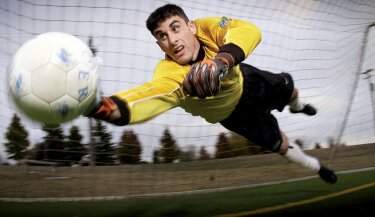
- Authority: How much, if any, authority is given to athletes.
- Practice Tip: Give athletes meaningful leadership roles that will encourage them to think critically about the team and team needs. During practice, assign one or two athletes to lead and make decisions concerning drills and other team tasks.
- Recognition: How recognition is distributed to athletes.
- Practice Tip: Recognition should be private and based off each individual athlete’s progress. Private recognition conveys the message that their own progress is important. During practice, pull athletes off to the side to give them recognition. If recognition of the team as a whole is deserved, make sure the recognition is not specific to certain people and instead focuses on the team as a whole.
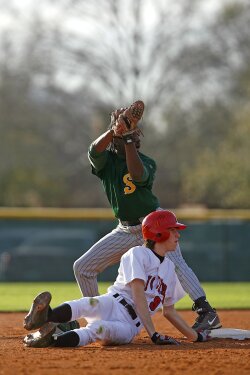
- Grouping: How athletes are put into groups for tasks
- Practice Tip: During practice, make groups with athletes of all skill levels. Grouping athletes with similar skill levels can be detrimental and enforce negative perceptions to athletes about their skill. Additionally, these mixed skill level groups help encourage athletes to be supportive and understanding of others as well as being adaptable in each drill. If you pair up the star athlete with an athlete that has less skill, you are encouraging your star player that they cannot expect every player to respond the same way in a drill. They will have to adapt to their teammate’s skills and provide additional support if needed and the less skilled athlete will be pushed by working with a more-skilled peer.
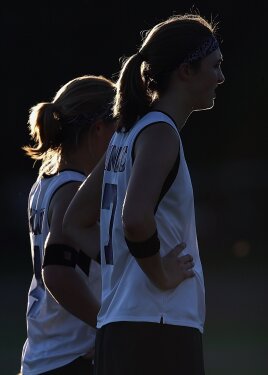
- Evaluation: How athletes are evaluated
- Practice Tip: Evaluation of athletes should be based primarily on individual improvements and how well they can perform a task. Outperforming another player should not be a factor in individual evaluations. Make sure teammate comparisons or game outcomes are not the primary focus of evaluations.
- Time: How much time is allowed for tasks
- Practice Tip: Give enough time for everyone to learn a new concept or skill. Everyone is unique in how quickly they learn. Having one set time for all athletes may not allow all athletes to master a skill. During practice, be adaptive and allow athletes the time they need to fully grasp a concept. If some athletes finish earlier, give them a more advanced version of the drill to complete. If needed, include additional time in future practices to learn a skill for those not grasping the content as quickly as others.

Athletes take cues from how you structure your environment and how (and who) you provide reinforcement. By making these changes and creating a mastery climate, you help improve and encourage your athlete’s motivation while also promoting positive characteristics. With these changes, an athlete can learn that success is not always about winning, but about how they perform and improve. When athletes are motivated by their own progress, they are not as discouraged as if they lose a game because their progress is more directly under their own control. They are able to see that there is more to success than just winning and that improving their own skills makes them successful.
References
Horn, T. S. (2008). Advances in Sport Psychology (3rd ed.). Champaign, IL: Human Kinetics.

